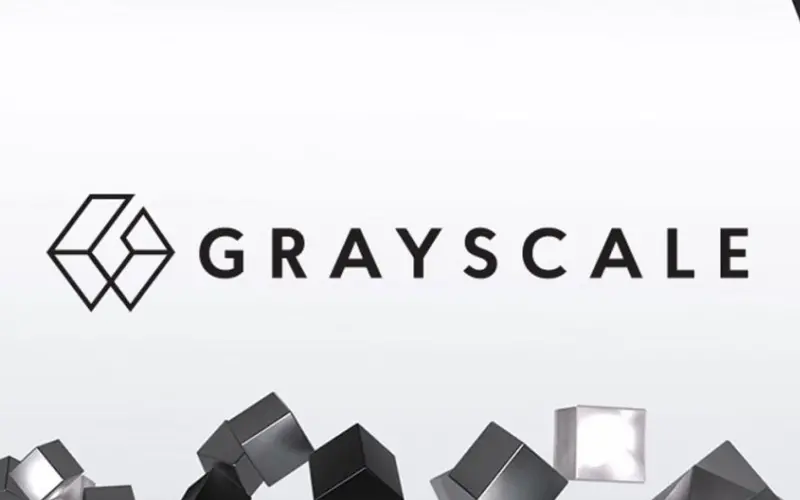Why is Helium, which just completed a $200 million financing, so sought after?
Original Title: Maybe There's a Use for Crypto After All
Original Author: Kevin Roose, The New York Times
Compiled by: Peter Pan, Rhythm BlockBeats
On February 19, the decentralized wireless network Helium completed a $200 million Series D funding round at a valuation of $1.2 billion, with participation from Tiger Global and FTX Ventures.
Previously, Helium had raised about $110 million in venture capital on PitchBook and secured a $111 million token sale led by a16z last summer. Today, Helium's existing supporters also include Khosla Ventures, GV, Multicoin Capital, Munich Re Ventures, and FirstMark Capital, making it widely favored by star institutions.
As a decentralized network composed of over 500,000 hotspots, Helium aims to provide bandwidth and collect data for IoT devices near users. What other features and applications does Helium have? Recently, The New York Times conducted a special report on Helium, which Rhythm BlockBeats has compiled as follows:
One of the most common questions from crypto skeptics is: What else can you do with crypto besides financial speculation and crime?
This is a difficult question to answer, partly because most of the successful (and legitimate) applications of cryptocurrency so far have been in finance or finance-related fields. There are many cryptocurrency exchanges, NFT trading platforms, and video games that involve buying and selling cryptocurrencies, but so far, not many crypto projects have achieved what I call "Normie Utility"—that is, solving problems that exist outside the crypto world (which are mainly not about buying and selling digital assets) without resorting to general non-crypto technologies.
However, I recently discovered such a project.
It is Helium. While it may not be the most eye-catching crypto project, nor does it involve bored apes or copies of the Constitution, it has been very useful in helping me understand how to use crypto to solve certain types of problems.
At a basic level, Helium is a decentralized wireless network for "Internet of Things" devices, powered by cryptocurrency.
The network consists of devices called Helium hotspots, which have antennas that can send small amounts of data over long distances using radio frequencies. Each hotspot costs about $500, nearly 200 times the cost of a traditional Wi-Fi hotspot, and they can share their owner's bandwidth with nearby internet-connected devices (like parking meters, air quality sensors, or smart kitchen appliances).
Anyone can use the Helium network, although so far, most of its users are companies like Lime (which uses Helium to monitor its connected scooters) and Victor (which uses it for a new internet-connected trap for mice). However, there are already over 500,000 Helium hotspots in use globally, with thousands more being added to the network each day.

Lime scooters in Hoboken, New Jersey
This is where crypto comes into play: in addition to transmitting data, Helium hotspots reward their owners for participating in the network by creating a cryptocurrency called HNT. These tokens can be bought and sold on the open market like any other cryptocurrency, and the more hotspots are used, the more HNT tokens are generated.
The Helium project was born in 2013 and was not initially a crypto company. Its founders initially tried to build a remote, peer-to-peer wireless network in a traditional way by persuading people and businesses to set up hotspots and connect them together. However, they struggled to get enough participants, and the network stagnated.
Frank Mong, Helium's Chief Operating Officer, told The New York Times that when the company was running out of funds in 2017, an engineer suggested during a company-wide meeting over Scotch whisky that if they could earn more cryptocurrency, they might be more willing to set up hotspots.
"And in that case, this crypto-driven incentive model actually makes sense," Frank Mong added.
Thus, the company broke away from the old business model and began to pivot. Helium would not build the network itself but would make it completely decentralized, allowing users to build the network by purchasing and connecting their own hotspots, with participants being rewarded with cryptocurrency and voting on proposals to change the network. If the price of these tokens rises, they would earn more money and build more hotspots.
After the pivot began, crypto enthusiasts rushed to set up hotspots on Helium while generating cryptocurrency. They also shared tips in communities like Reddit and YouTube, such as expanding hotspot coverage by connecting them to tall buildings or placing antennas on rooftops. Some hotspot owners claim that although everyone's income may decline as more hotspots are added to the network, they can still earn thousands of dollars a month this way.
I realized that this is a very important capability of cryptocurrency projects: to kickstart projects by providing incentives to access the underlying infrastructure. While the development of a project does not necessarily have to rely on how to acquire more cryptocurrency to advance, in the case of Helium, using crypto as a way to encourage user participation and make hotspot owners feel satisfied with building what they own makes sense.
Moreover, a computer programmer from Philadelphia, Arman Dezfuli-Arjomandi, told me in a podcast he hosted about Helium that the decentralization of the Helium network is its greatest advantage. "If this network were built on some centralized platform, there would always be the possibility of that platform going public or being acquired, whereas a physical infrastructure built by a large number of users is determined by those who own it."
Unlike many other crypto projects, Helium is a product that is used daily by a large number of real people and companies. The participants are almost not speculators but people interested in creating a decentralized wireless network. And in Helium's Discord, which has 140,000 members, discussions about token prices are prohibited. Meanwhile, with the gradual rollout of new types of 5G hotspots, Helium's speed will become even more significant in the coming months.
Additionally, Helium's blockchain is protected by an algorithm called "Proof of Coverage," which requires much less energy than the PoW (Proof of Work) used by Bitcoin and other cryptocurrencies, and is less harmful to the environment. According to Helium's official estimates, the energy used by its hotspots is equivalent to that of a 5-watt light bulb.
To ensure my conclusions are correct, I will next test Helium through my "Normie Utility."
Does it solve non-crypto problems? Yes. There are millions of connected devices in the world, and connecting these devices to the Helium network is much cheaper than purchasing cellular data networks for each device. At the same time, due to the long-range of the hotspots, Helium's network can reach places that Wi-Fi and cellular networks cannot.
Is it useful for things beyond speculation? The answer is also yes. The Helium network itself has value; while hotspot owners do profit when the price of HNT rises, their primary way of making money is by adding new hotspots rather than trading HNT on cryptocurrency exchanges.
Could Helium work without crypto technology? The conclusion is that the company tried some non-crypto methods but almost all failed. Adding HNT to the overall project incentives solved what tech experts call the "cold start problem," as it is often difficult for new networks to attract their first batch of users.
Helium is not perfect; like many other crypto projects, it exists in a regulatory gray area, and users could be affected if Washington decides to crack down. Federal regulators have indicated that many cryptocurrencies may be considered securities, which would subject Helium hotspot owners to various securities laws. Meanwhile, most hotspots are currently located in densely populated cities, which means it cannot yet reach people in more remote areas.

Helium hotspots and applications
On the other hand, users who set up Helium hotspots at home may technically violate their internet service provider's terms of service, as it involves reselling part of their bandwidth. For example, Comcast Xfinity subscribers' terms prohibit users from using their connection for any purpose other than personal or non-commercial residential use. However, so far, internet service providers have not launched large-scale crackdowns on Helium users, though this situation could change. "We hope internet service providers will be open to the setup of Helium hotspots," Frank Mong told The New York Times.
Despite these limitations, one thing I like about Helium is that it largely avoids the flashy hype and exaggeration that many crypto projects exhibit. It promises to fundamentally change business and culture, rescue us from government scrutiny, and alter the structure of our daily lives. Helium is a practical real-world infrastructure with a cryptocurrency incentive scheme that allows the whole thing to operate under decentralized conditions.
Currently, I have been testing a Helium miner in my home office for about a week. It is a golden box about the size of a thick deck of cards, with a long antenna on top. In the days after I plugged it into my Wi-Fi router, it generated HNT worth about $7, which is not a large amount, but if I let it run for a few months, I could recoup my costs.
Participating in the Helium network, even in such a trivial way, has been a good experience for me. I earned some rewards while enabling nearby devices to connect to the internet more cheaply. Later, I also understood its appeal in being crypto-driven, rewarding users for taking risks on unproven new things.
I won't get rich through Helium's tokens, and not everyone needs to rely on a crypto project to make a significant income; perhaps for some, being useful is enough.










